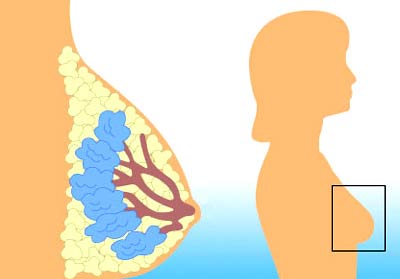Cancer research: New model, no need to try on mice
Three-dimensional model of breast cancer has been established by British scientists. Thanks to this model, one can directly observe and test a cancer-infected cell without having to spend money or spend time experimenting on mice.
According to a team at the Queen Mary's School of Medicine and Dentistry at the University of London, the model, which includes healthy cells and cancer cells, will help experts understand the development of breast cancer right away. the first stage. Detecting disease right at the early stage.
Professor Louise Jones, a breast pathologist at the Cancer Institute in Queen Mary, University of London, said the model is much more complex than those grown in bacterial culture.
This miniature 3D model simulates a characteristic form of early breast cancer, called ductal carcinoma in situ (DCIS).
About 20% of breast cancer cases start as DCIS and researchers want to learn more about how a new cancer cell has changed to develop into larger cancers.
The team cultivated three different cell types from healthy tissues and breast tissue. The cancer cells cultured in the collagen medium create three-dimensional structures very similar to the glands that it has in the breast.

'The results are good and can be seen as the beginning of a revolution in breast cancer research'.(Photo: news-medical.net)
Experts discovered a type of cell - myoepithelial - from healthy breast tissue that inhibits the growth of breast cancer cells. Meanwhile, fibroblasts from cancer have the effect of destroying the structure of healthy cells with glands.
According to Professor Jones, understanding the mechanism of the above cell types will help physicians determine which patients have early breast cancer for timely treatment.
While more and more women are diagnosed with early-stage breast cancer, the birth of this model is expected to open new therapies for patients who have just had cancer. .
Replacement for animal testing
According to the team, the 3D model in this test tube can replace animal tests.

About 20% of breast cancers start in the form of topical ducts (DCIS), a characteristic form of early breast cancer.(Photo: en.sanofi-aventis.com)
So far, mice have been widely used in breast cancer research. However, according to experts, cancer patterns in mice differ from those of human cancer.
Nicky Gordon, an expert at Dr Hadwen Trust, an organization calling for restrictions on animal testing, said: 'For breast cancer, the gradual removal of animal models is an acute need. Because the similarity between cancer in animals and human cancer is very low. '
Professor Jones added: 'With this model, we will be able to detect more DCSI cases than normal and this is clinically significant'.
"This is a great improvement, we have begun to understand the complex structures that are usually only available in animal tests."
In that regard, Mr. Gordon "Unreliable research, time-consuming, money-and-life studies need to be eliminated. Therefore, we are excited by the promising outlook of the cancer model. This 3D breast '.
'When this model is completed, animal testing will be greatly reduced if not to be completely replaced by this method.'
According to him, "further research is necessary, but the results obtained are good and can be seen as the beginning of a revolution in breast cancer research."
Quang Thinh
- The mole rats eat the mouse rat manure to get instructions for raising children
- The US developed a drug to help diagnose breast cancer early
- New cancer prediction model
- 3D printers create protein chain models for cancer research
- Australian scientists have released a drug that can cure cancer
- New mathematical model against cancer
- Diary secret codes of 200 cancer diseases thanks to mathematics in the UK
- Scientists have created transparent mice
- Promising breakthrough in research on cancer treatment vaccine
- The woman pioneered the use of mice for science
- The truth is hard to believe: A pair of experimental mice can be as expensive as a billion-dollar car
- Robot 'model'
 Green tea cleans teeth better than mouthwash?
Green tea cleans teeth better than mouthwash? Death kiss: This is why you should not let anyone kiss your baby's lips
Death kiss: This is why you should not let anyone kiss your baby's lips What is salmonellosis?
What is salmonellosis? Caution should be exercised when using aloe vera through eating and drinking
Caution should be exercised when using aloe vera through eating and drinking